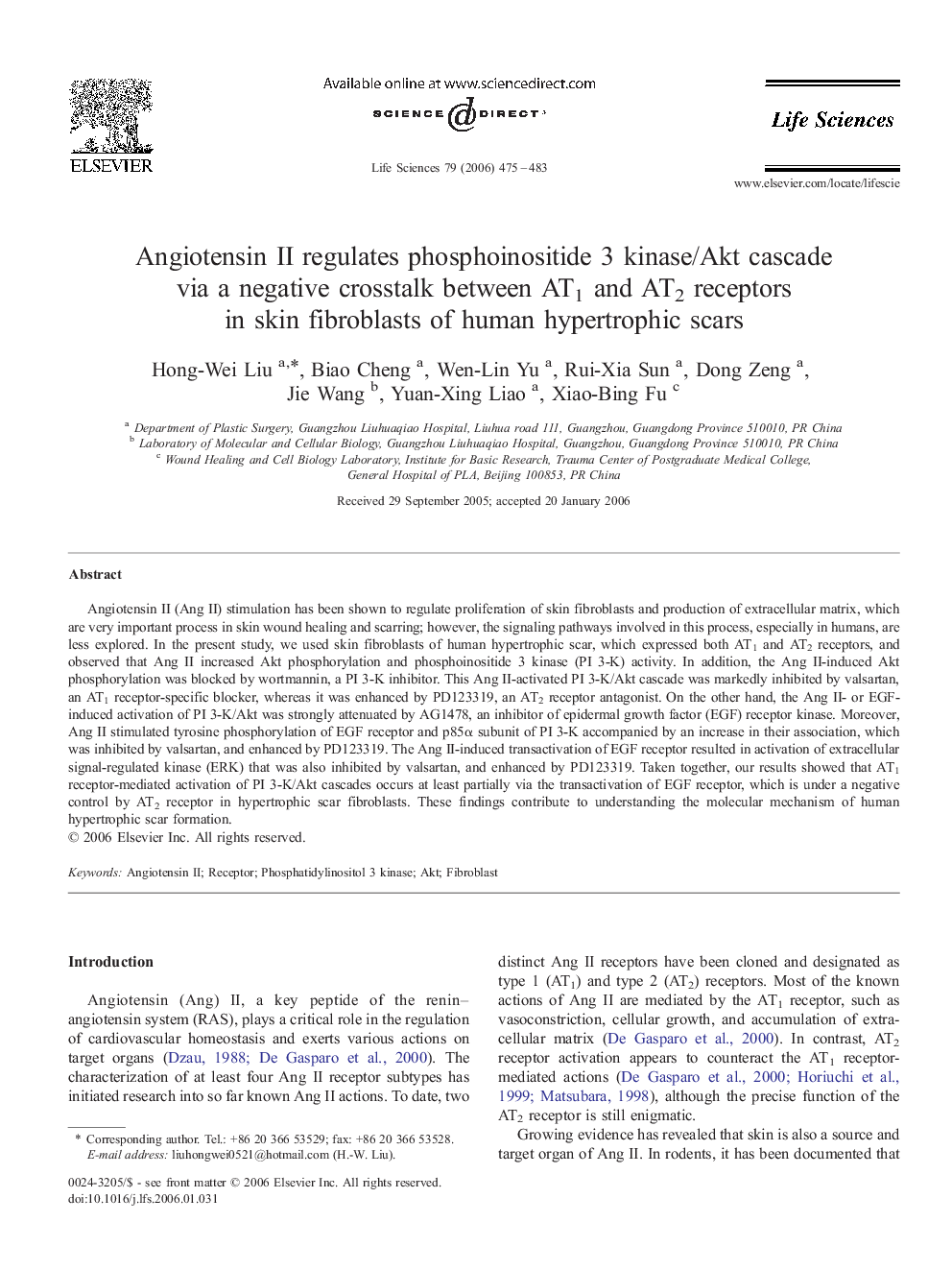| کد مقاله | کد نشریه | سال انتشار | مقاله انگلیسی | نسخه تمام متن |
|---|---|---|---|---|
| 2553952 | 1124937 | 2006 | 9 صفحه PDF | دانلود رایگان |

Angiotensin II (Ang II) stimulation has been shown to regulate proliferation of skin fibroblasts and production of extracellular matrix, which are very important process in skin wound healing and scarring; however, the signaling pathways involved in this process, especially in humans, are less explored. In the present study, we used skin fibroblasts of human hypertrophic scar, which expressed both AT1 and AT2 receptors, and observed that Ang II increased Akt phosphorylation and phosphoinositide 3 kinase (PI 3-K) activity. In addition, the Ang II-induced Akt phosphorylation was blocked by wortmannin, a PI 3-K inhibitor. This Ang II-activated PI 3-K/Akt cascade was markedly inhibited by valsartan, an AT1 receptor-specific blocker, whereas it was enhanced by PD123319, an AT2 receptor antagonist. On the other hand, the Ang II- or EGF-induced activation of PI 3-K/Akt was strongly attenuated by AG1478, an inhibitor of epidermal growth factor (EGF) receptor kinase. Moreover, Ang II stimulated tyrosine phosphorylation of EGF receptor and p85α subunit of PI 3-K accompanied by an increase in their association, which was inhibited by valsartan, and enhanced by PD123319. The Ang II-induced transactivation of EGF receptor resulted in activation of extracellular signal-regulated kinase (ERK) that was also inhibited by valsartan, and enhanced by PD123319. Taken together, our results showed that AT1 receptor-mediated activation of PI 3-K/Akt cascades occurs at least partially via the transactivation of EGF receptor, which is under a negative control by AT2 receptor in hypertrophic scar fibroblasts. These findings contribute to understanding the molecular mechanism of human hypertrophic scar formation.
Journal: Life Sciences - Volume 79, Issue 5, 27 June 2006, Pages 475–483